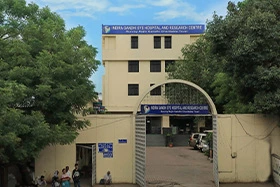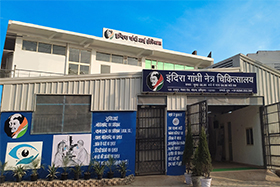- Centurion Phacoemulsification Vision System
- Infiniti Phacoemulsification Vision System
- Zeiss Lumera Operating Microscopes
- A Scan Biometry: Zeiss IOL Master 700
- B Scan Ultrasonography
- Email: enquiry@indiragandhieyehospital.com
- Call: 01242710271
Specialties
Best Cataract Treatment in India - IGEHRC
The Department of Cataract and General Ophthalmology offers a range of treatments that are the best in class in northern India. Renowned for providing the Best Cataract Treatment in India, the department has a team of experienced and acclaimed surgeons who are experts in advanced Cataract microsurgery procedures. It also serves as a Cataract surgery training centre where numerous ophthalmologists have been trained in various modalities of Cataract surgery since its inception

Technical set up
- Keratometer
- Pentacam: Corneal topography
- Retinal Acuity Meter (RAM): Macular function
- Pachymetry
- I TRACE Aberrometry
- FD OCT
- Anterior segment digital photography
- Dry eye disorders estimation
- Specular microscopy
Treatment available
The department offers to the efficient diagnosis and management of a wide range of diseases:
- Senile Cataracts
- Developmental Cataracts
- Posterior Polar Cataracts
- Traumatic Cataracts
- Subluxated and Dislocated Cataracts: Cionni ring, Segments and CTR implantation
- Complicated cataracts with uveitis
- Complicated cataracts with glaucoma
- Combined Cataract and Retina Surgeries
- Secondary IOL implantation
- Management of Aphakia
- Cataracts with Microcornea and Colobomas of Iris, Lens and Retina-choroid
- Refractive errors management with CLE
- Iris-Fixated Intraocular lenses
- Aniridia IOLs
- Pupillary Reconstruction surgeries
- Management of Refractive errors
Procedures or surgeries
The department has an array of surgeries to offer and provide most recent advances in the field of Cataract surgery which include:
Topical Microincision Cataract Surgery (MICS) with Foldable MULTIFOCAL / TRIFOCAL / TORIC AND TORIC MULTIFOCAL Intra Ocular Lens Implantation: Cataract surgery is performed without injection by the latest & most advanced Centurion Phacoemulsification vision system from a 2.2 mm incision and a foldable Multifocal/ Trifocal/ Toric / Toric Multifocal lens implanted .
Topical Microincision Cataract Surgery (MICS) with Foldable EDOF Intra Ocular Lens Implantation:Cataract surgery without injection by Centurion Phacoemulsification vision system from a 2.2 mm incision and a foldable Extended Depth Of Focus (EDOF) lens implanted
Traumatic Subluxated Cataracts:Cataract surgeries with inadequate Zonular support ; Cionni Ring, Segments or Capsular Tension Rings are implanted with Foldable IOLs. Wound exploration and reconstruction in cases of Penetrating trauma with cataract.
Management of Aphakia with Secondary IOLs: Scleral Tuck IOLs, Iris Fixated IOLs
Secondary Management of Surgical complications in cases referred from elsewhere: Our Surgical team has special expertise in the management of surgical complications of patients referred from outside
Small Incision Sutureless Cataract Surgery: An excellent quality surgery in high volumes of Outreach community cases
The department is equipped with microbiological and histopathological evaluations: of diseases of external eye diseases




